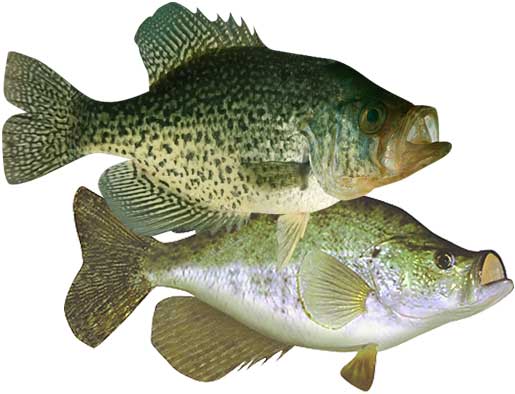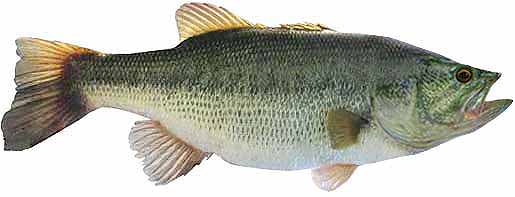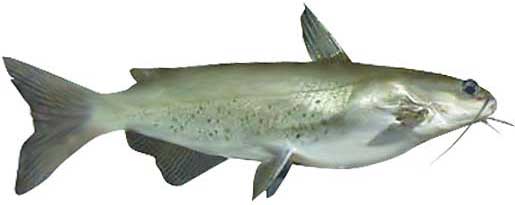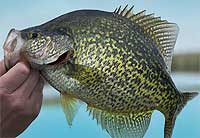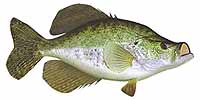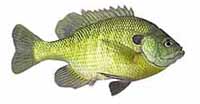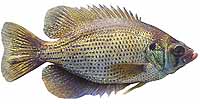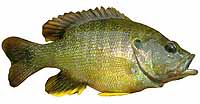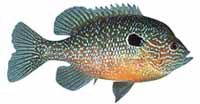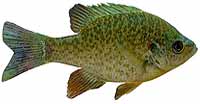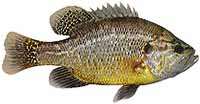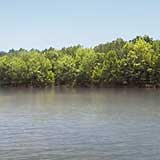Fishing Report For Lake D’Arbonne, LA
By Rick Seaman
August 21, 2025
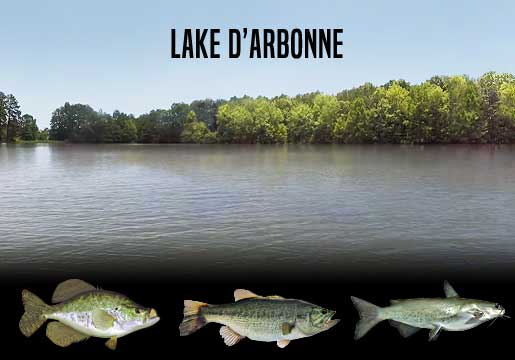
Fishing Reports
Popular Fish Species Lake D’Arbonne, LA
Black & White Crappie
Current Report: Good To Very Good
SUMMER. Water temperatures are currently in the 80's, and crappie fishing has been very good. Now that the hot Summer sun is warming the shallows, crappie have retreated to depths of 10 to 15 feet, or embedded in the shade of shallower, heavy vegetation. This is a good time to focus around standing timber and brush piles. Anglers are also locating schools of crappie hanging around timber and around creek channel edges. Successful locals are spider-rigging at a very slow trolling speed, or casting jigs along the edges of river and creek channels. Forks Ferry and Stowe Creek are pretty consistent producers.
FALL. Baitfish, which will be moving into shallow flats, coves and bays, will draw crappie into these areas early in Fall, where they will feed heavily in preparation for the cold Winter. Small spoons, along with minnows, hair jigs, and crappie jigs, are good options during this feeding marathon. Later in October and November, crappie move out to suspend 10 or 12 feet deep, in 20-foot or so of water.
WINTER. Once the shallows start cooling rapidly, crappie will migrate to deeper holding areas, mostly off shore. At this time they are typically caught using a very slow presentation, in 20 to 30 feet of water. If they are suspending in open water, they often relate to some cover, or structure change, directly below them. Bridge pilings, and along ledge edges and submerged structure can hold nice schools of slabs.
SPRING. In early Spring, crappie begin staging in 12 to 15 feet of water, just outside shallow spawning bays and flats. Spring is the ideal time to be on the water, as crappie have moved shallow to spawn. As the water warms into the 60's, they are typically caught in 2 to 4 feet of water. Docks, brush, wood and vegetation are where most anglers are catching good numbers using small crappie jigs or live minnows. After the spawn, crappie move outside the spawning area and typically hold deeper on the closest cover, before moving out to flats with timber, stumps, brush and other cover. Once they move outside, anglers are reporting good success using fish finders and forward facing sonar to locate schools of crappie, which tend to stack vertically around cover. Light tackle with 4 lb to 8 lb line is a popular choice.
Largemouth Bass
Current Report: Poor Good To Very Good
SUMMER. Water temperatures are in the 80's, so summer patterns are in full swing. Bass are feeding shallow early and late in the day, where they are being caught on topwater, crankbaits and swimbaits. Wacky-rigged stick worms are catching some nice bass, especially around bluegill beds. Largemouth bass here feed on gizzard shad, threadfin shad, small bream and crawfish. During the hotter parts of the day, they are being caught deeper around standing timber, channel edges, and ledges, 15 to 20 feet deep. Good reports are coming from anglers fishing al around the lake.
FALL. When Fall arrives, bass here will follow schools of baitfish into coves and shallow bays around 6 feet deep, where squarebill crankbaits, swimbaits, and slow-rolled spinnerbaits have been successful in prior years. As deeper water cools, bait and bass move out to ledges, channel edges, points and humps where flutter spoons are often the ideal bait.
WINTER. Winter will isolate them around slightly deeper structure, flats, points and creek channels, like Corney Bayou creek. They can be found from 10 to 25 feet deep. Here they hold, feeding less frequently, awaiting warmer water to return in Spring. Drop shots, flutter spoons and slowly worked jigs catch bass this time of year.
SPRING. Once water temperatures rise into the low 60's, largemouth will move from deep wintering holes, to shallower water just outside spawning areas. Jerkbaits, spinnerbaits and vibrating jigs typically get bites just away from the shoreline. At this time they are preparing for the spawn. Once water warms into the mid to high 60's, they will move into 1 to 4 feet of water, and create nests, then lay their eggs. Immediately afterwards, females move to deeper water and males remain to guard the eggs, and then the fry. After a couple weeks, the males also move to slightly deeper water. Crankbaits, vibrating jigs, plastic worms and swimbaits are catching bass during this period.
Channel Catfish
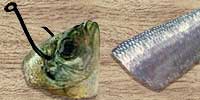

Current Report: Good To Very Good
As the most commonly used filets in a po 'boy sandwich, channel catfish are very popular with locals.
SUMMER. In Summer, slow-moving water, at the river end of the lake may draw catfish to feed. Now they are scattering, and feeding in relatively shallow water. Anglers fishing from the bank have been quite successful, especially around structure, causeways and rock outcroppings. Reports indicate the most successful anglers are using nightcrawlers, chicken livers, cut bait or shrimp. Fishing from late in the day until midnight is producing some of the best results, as this is their prime feeding time.
FALL. Fall is one of the best times of year for catching channel catfish. Early in the season, they move into shallow coves and bays, following bait. Later, they migrate away to moderately deeper holes in the main channel of the lake. They remain in these areas and feed aggressively in preparation for Winter.
WINTER. In Winter, the channel cats gather in deep holes and go virtually dormant, especially if water cools into the 40's. They hole up in pockets from 20 to 30 feet deep and await warmer water. Slow presentations, especially with cut bait, can still entice strikes.
SPRING. In Spring, when water temperatures rise into the high 40's, channel catfish start their migration into shallow coves and bays, hanging around stumps and brush. They hold here, feeding aggressively, until water warms into the mid 70's, at which time they begin the spawn. Anglers are using small slip sinkers, 3-way rigs, or Carolina rigs. There are good numbers of 1 1/2 to 3 pound channel catfish being caught.
Fishing Video
Fish species to fish for...
Guide to fishing for largemouth bass, spotted bass, channel catfish, black crappie, white crappie, bluegill, flier sunfish, green sunfish, longear sunfish, redear sunfish and warmouth at Lake D’Arbonne in Louisiana.
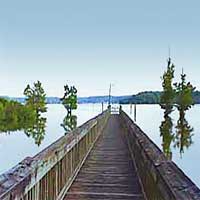
Lake D’Arbonne is a 15,200-acre lake with over 100 miles of shoreline. Largemouth and spotted bass are abundant, channel catfish, crappie, bluegill and sunfish are all abundant in the lake. You can fish from the bank at public access areas around the lake.
Primary fish species to catch
Click images for fishing tips and details about each species.
Today's Weather & Forecast
Click here for boat ramps.
Fishing License
Click here for a Louisiana Fishing License.
Map - Fishing & Access
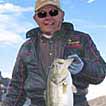
Rick Seaman is a fishing enthusiast with over five decades of fishing experience, a retired tournament fisherman, author of numerous published articles on fishing, and co-author of the book "Bass Fishing - It's not WHAT you throw, It's WHERE you throw it".
Contact Information
Lake D'Arbonne State Park
3628 Par Rd 4410
Farmerville, LA 71241
318 368-2086
Fishing lakes in each state
082225
Lake D’Arbonne, Louisiana Report
LOUISIANA


Fishing for bass, crappie, catfish and numerous species of sunfish/bream in northern LA.


